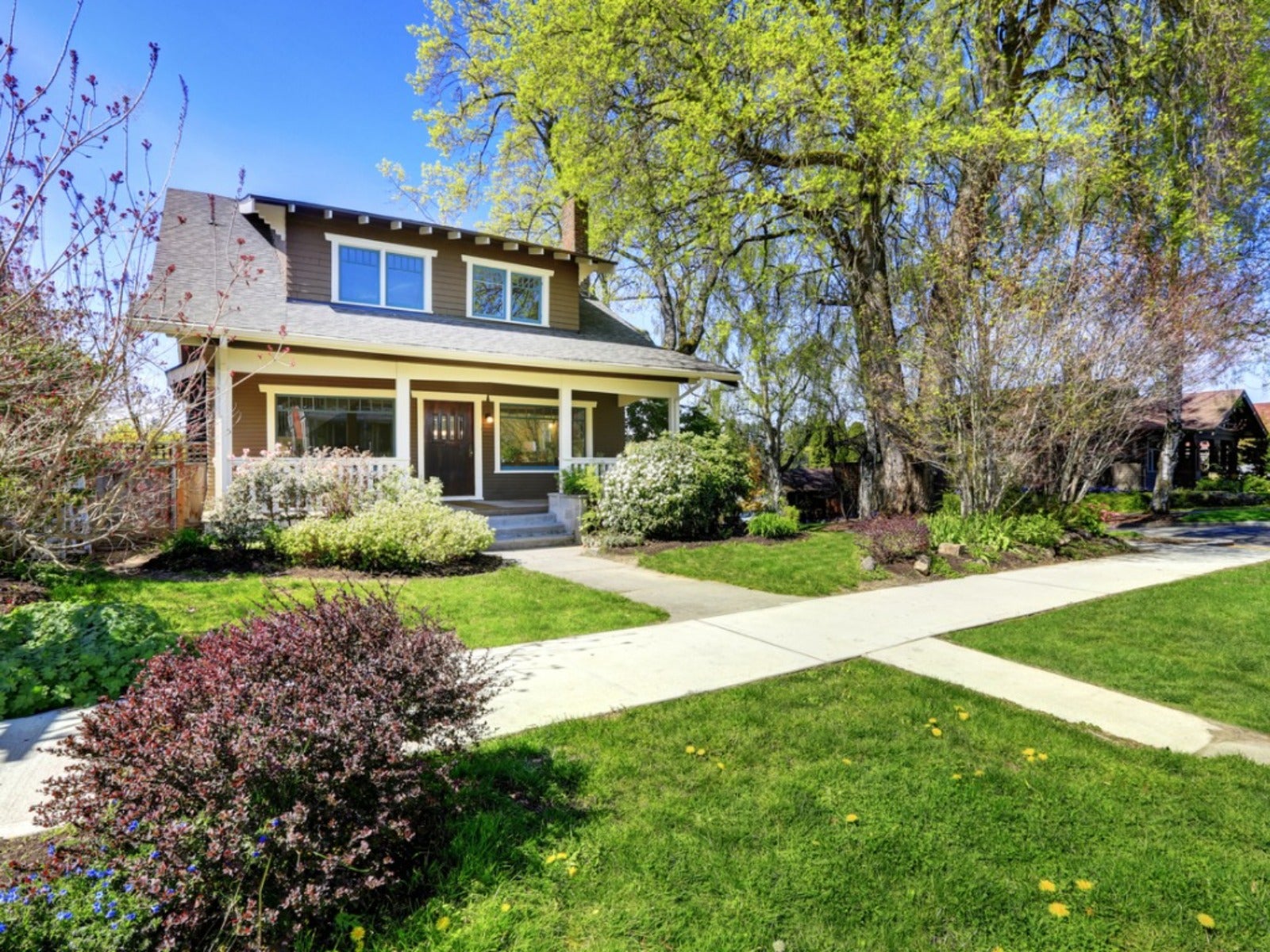Energy Efficient Landscaping Tips To Lower Home Energy Bills


Houses are responsible for nearly one-quarter of all energy used in the U.S. today. Energy efficient home improvements are increasingly popular as people realize the impact their choices make on their environment. Of course, there are also savings when you consume less energy. What many homeowners don’t realize is that landscaping choices can improve home energy efficiency.
Landscaping and Home Energy Use
Knowing how to make your house more energy efficient is useful for saving on energy bills but also reducing your footprint on the environment. The location of plants around a house can change the hyperlocal climate, holding in heat, blocking sunlight, and protecting against wind, for instance. As just one example, blocking cold wind can save a homeowner as much as 25% on heating costs.
Know Your Climate
Energy efficient landscaping techniques vary depending on the type of climate. The U.S. Department of Energy makes it easy for homeowners to make smart landscaping choices by dividing the country into four main climate types:
- The cool region includes Alaska, Maine and northern New England, Wisconsin, Minnesota, Montana, and parts of Colorado and the Dakotas.
- Temperate states include much of the Northeast, Midwest, Central Great Plains, Mountain states, and Pacific Northwest.
- The hot and arid region is the Southwest, including parts of Texas, California, Arizona, New Mexico, Utah, and Nevada.
- The hot and humid states make up most of the Southeast as well as Hawaii.
Knowing how to increase energy efficiency by climate will help you make the most of landscaping for where you live.
Landscaping in Cool Climates
For the cool region, the primary goal is to reduce heating costs in winter. Learn the primary direction of winter winds and use plants as windbreaks to keep colder air from infiltrating the home. Keep the south side of the home clear of tall plants so that you get warmth from winter sunlight.
Cool states do get hot summers, so consider adding plants that will shade the home. You can use deciduous trees along south-facing walls to block summer sun but allow warmth in winter when they have lost their leaves.
Temperate Region Landscaping
Most of the cool rules apply in temperate regions as well, although winters are not quite as cold. While blocking winter winds, you can also use plants to funnel winds during hot summers. Use tall plants to provide shading of the roof to reduce air conditioning costs in summer.
Sign up for the Gardening Know How newsletter today and receive a free copy of our e-book "How to Grow Delicious Tomatoes".
Landscaping in Hot and Arid Climates
The Southwest can get very hot in summer, so shade is essential. Use tall plants and trees to shade walls and the roof. Use a lot of plants close to the home to take advantage of the release of water, which provides a cooler microclimate. Use plants to funnel breezes toward the home for a cooling effect, or do the opposite if you rely heavily on air conditioning.
Hot and Humid Landscaping
In the Southeast, you can keep the house cooler in summer by directing breezes toward it. Shade helps keep the house cool as well, but use trees that allow some light to hit the home in winter to reduce heating costs. Avoid planting too many beds close to the house, as this can make it even more humid and uncomfortable.
Additional Landscaping Tips for Energy Efficiency
Some rules apply to most areas regardless of climate. For instance, if you have an air conditioner, use plants to shade it. This can increase its efficiency by 10% or more. If your home gets very hot in summer, use plants to shade windows. Homes absorb more heat from windows than walls. If you have a blacktop driveway, shade it with plants. Heat absorbed by a driveway can radiate back towards the home.
When using plants as winter windbreaks, choose evergreen trees or shrubs. Where you plant them matters too. The distance from the house should be about two to five times the height of the plants. The most effective windbreaks cover the windward side of the home but also wrap around the corners to protect more of the building.

Mary Ellen Ellis has been gardening for over 20 years. With degrees in Chemistry and Biology, Mary Ellen's specialties are flowers, native plants, and herbs.